|
Case
study 3
INTRODUCTION
International
criminal trials do allow individuals
to be held accountable for what may
have been state violence committed
through institutional state
structures and state bureaucracies;
but a focus on individual criminal
responsibility in the investigation
into and prosecution of alleged mass
atrocities has a number of potential
pitfalls. The first is that charging
a single person with extensive
crimes spread over years carries the
risk of ‘over-prosecution’ or even
of distorting the complex historical
and political processes that led to
the mass atrocities in question. The
second pitfall is that isolating a
single political leader as
responsibility for mass atrocities
risks scapegoating an individual for
what was in fact can also be seen as
the criminality of a state and of
state institutions.
Yet, there is no
doubt that Slobodan Milošević, due
to his de jure and de facto powers,
and his role as the leader of all
Serbs by 1990 bears a huge, if not a
crucial responsibility of the
violent disintegration of the SFRY.
The opinion of some historians is
that existing interpretations of the
disintegration of Yugoslavia are
based chiefly on “contradictory and
hardly impartial evidence” such as
witness accounts, personal memoirs,
and Milošević’s own public
statements. This view is sometimes
supported by the assertion that
Milošević was “extremely secretive,
leaving very little documentary
trace,” and that his strategic
decisions were made in the seclusion
of his home, where only his wife and
a small group of advisors were party
to his thoughts.1 The ICTY
investigation into Milošević’s
political and criminal behaviour had
initially found that Milošević
preferred one-on-one meetings and
had suggested that these meetings,
both domestic and international,
were not officially recorded and
archived as prescribed by domestic
laws and regulations. Milošević was
said to have been regularly
accompanied by Goran Milinović, his
Chef de Cabinet, who supposedly made
notes.2 But in 2001, the Prosecution
discovered that there were indeed
records of these meetings; and that
the most interesting – and arguably
most valuable – material was located
in the state archives of the FRY and
Serbia.
THE SLOBODAN MILOŠEVIĆ TRIAL ARCHIVE
Although, there is
some recognition among historians of
the need to explore new material
that has emerged from the ICTY and
government archives, there have been
a few attempts to incorporate that
material in the studies in the
history of the SFRY and its demise.
And, for good reason, because
research of the trial record reveals
a different picture – that Milošević
did at times leave traces, and that
audio and video records in some
cases irrefutably establish the
veracity of certain events or
claims.
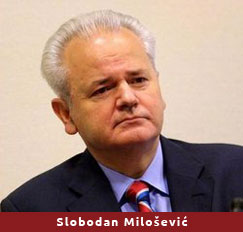 Documents tendered
by the Prosecution and pertaining to
Milošević’s state of mind before,
during, and after the wars in
Croatia, BiH, and Kosovo – which
were analysed for this research –
are thus important to the developing
historiography of the conflict.
During the early years of war, in
the period relevant to the Croatia
indictment, telephone intercepts,
records of meetings of the
Presidency of the SFRY (PSFRY), and
a video known as the Kula Camp Video
illustrate the evolution of
Milošević’s state of mind. For the
period covered by the Bosnia
indictment, this evidence again
includes telephone intercepts, but
also records from two FRY state
organs, the Council for
Harmonization of Positions on State
Policy and the Supreme Defence
Council (SDC). For years covered by
the Kosovo indictment, documents
from an ad hoc body known as the
Joint Command were of great value,
but the key piece of evidence shown
at the trial was undoubtedly a video
that featured a Serbian-based
paramilitary group, the Scorpions,
executing civilians taken from
Srebrenica in the summer of 1995.
The Scorpions were re-deployed by
the Serbian Ministry of Internal
Affairs (Ministarstvo Unutrašnjih
Poslova, or MUP) in 1999, when they
again committed crimes against
civilians. Although footage from the
Scorpions Video was shown during the
cross-examination of a Defence
witness, the video was never
tendered into evidence. Yet, what
transpired in the courtroom was the
cause of an unprecedented uproar in
the world and in the region. Documents tendered
by the Prosecution and pertaining to
Milošević’s state of mind before,
during, and after the wars in
Croatia, BiH, and Kosovo – which
were analysed for this research –
are thus important to the developing
historiography of the conflict.
During the early years of war, in
the period relevant to the Croatia
indictment, telephone intercepts,
records of meetings of the
Presidency of the SFRY (PSFRY), and
a video known as the Kula Camp Video
illustrate the evolution of
Milošević’s state of mind. For the
period covered by the Bosnia
indictment, this evidence again
includes telephone intercepts, but
also records from two FRY state
organs, the Council for
Harmonization of Positions on State
Policy and the Supreme Defence
Council (SDC). For years covered by
the Kosovo indictment, documents
from an ad hoc body known as the
Joint Command were of great value,
but the key piece of evidence shown
at the trial was undoubtedly a video
that featured a Serbian-based
paramilitary group, the Scorpions,
executing civilians taken from
Srebrenica in the summer of 1995.
The Scorpions were re-deployed by
the Serbian Ministry of Internal
Affairs (Ministarstvo Unutrašnjih
Poslova, or MUP) in 1999, when they
again committed crimes against
civilians. Although footage from the
Scorpions Video was shown during the
cross-examination of a Defence
witness, the video was never
tendered into evidence. Yet, what
transpired in the courtroom was the
cause of an unprecedented uproar in
the world and in the region.
Materials selected
as evidence by the Prosecution and
Defence in the Milošević case
constitute an unmatched historical
source; and even with some gaps in
the trial record, it incorporates
documents from state archives that
would have otherwise been
unavailable to the public and to
researchers for many decades.
Indeed, some of the trial material
would never have surfaced at all
were it not for the obligation of
states to cooperate with the ICTY,
or more precisely, to provide the
OTP and the Defence with materials
upon request. Still, there remains
trial material that is officially
available and yet inaccessible to
the public; and the
(in)accessibility of ICTY records to
the public is an important issue.
The ICTY Court Record (ICR), an
electronically accessible database,
is sometimes more of a challenge
than an aid to researchers because
it comprises only a selection of
materials, not the full record of
every trial, and remains incomplete
for a number of technical and other
reasons.3
What makes the
Milošević trial record especially
interesting as a source of history
is the fact that it includes
responses by Milošević himself to
every piece of evidence brought
against him. Milošević not only
represented himself in court, and
therefore responded in that capacity
to the evidence presented, but also
made remarks throughout the trial
from the standpoint of a man
attempting to defend his political
and private decisions.
The test for the
introduction of evidence in court is
bound by a strict forensic process,
which consists of presentation of
evidence by one trial party,
followed by cross-examination by the
opposing party, and eventually the
right of re-direct by the first
party. The product of this process –
forensic truth – is different from
historical truth in several ways.
For one, a historian is not bound by
the same forensic process in order
to include a source in a historical
account and instead seeks
corroboration in other available
sources, of a greater variety than
are admissible in a courtroom, and
through this analysis develops a
historical interpretation of an
event. And, over the course of time,
this interpretation might be altered
by other historians, which is
another way in which historical and
legal narratives about the same
topic may differ considerably; as
the latter is captured in closing
arguments and judgements, which are
formed in the normative legal
framework and in rigid court
procedures, and remain fixed in
time.
At the ICTY, a
discrepancy between the public
perception of responsibility for
mass atrocities and the legal
requirements for proof of the crimes
alleged against an individual such
as Milošević have often led to the
accrual of a great deal of evidence
in order to prove ‘the obvious’ in a
court bound by strict legal rules
and procedures.4 For every general
allegation against Milošević,
probative evidence was needed to
establish that the crime actually
happened and that Milošević was
criminally responsible for it. The
large amount of evidence presented
by the parties during the trial was
also partially due to the changing
world in which we live. Modern
technology made the wars in the
former Yugoslavia into media
spectacles, watched daily on the
television and captured on the
Internet. Minute details of the
conflicts became available and
accessible to the public in nearly
all the world’s languages; and
material from these ‘open sources,’
potentially relevant as evidence,
was almost unlimited.5
Notwithstanding
the huge amount of audio, video, and
written material that exists about
the conflicts and about the role of
Slobodan Milošević in them, ICTY
Prosecutors – unlike their Nuremberg
counterparts – did not have full or
easy access to documentary material
from the archives of the former
leader’s country.6 Documents from the
official archives of the FRY and the
Republic of Serbia, considered more
important from a forensic point of
view than open source materials,
were difficult and sometimes
impossible to obtain.7 This was in
stark contrast to the experience of
prosecutors in Nuremberg, for which
Allied Powers had simply seized the
state and Nazi Party archives of
defeated Germany for use as evidence
in court. Nonetheless, evidence that
did come directly to the ICTY from
state archives in Serbia, the FRY,
the RS, and the RSK makes the
Milošević trial record particularly
valuable, as it includes state
documents that would otherwise have
remained protected for decades or
even longer. Once used in court as
evidence, most of these documents
became public.
The Milošević
trial record comprises transcripts,
material tendered as evidence,
motions on administrative and
procedural matters, and decisions
and judgements of the Trial Chamber
and Appeals Chamber. The record –
the main source for this research –
is so large that it is too
substantial to be analysed in a
single academic study, and it is not
examined in full here. Still,
missing source materials that were
requested but never produced
represent a gap; meaning that the
trial record, while vast, is not
exhaustive. And so, despite its
size, the trial record alone was
insufficient for the task of this
research, and sources from outside
the trial proceedings – known as
extratrial material – were also
analysed.
Extratrial
material originating from the ICTY
and OTP includes investigative and
analytical documentation, such as
reports by in-house investigators,
researchers, and analysts on the
Milošević trial team, which were not
used per se in court proceedings.
ICTY internal policy documents on
topics such as indictment strategies
or how to conduct the trial also
fall under the designation of
extratrial material. In other words,
a considerable amount of extratrial
material was used for the court’s
investigative and research purposes
without becoming a part of the
official trial record. The ICTY
database contains diverse materials
collected by the OTP, from
demographic data on the former
Yugoslavia to media reports that may
have been used in preparation for
cross-examination of Defence
witnesses to seemingly endless
supporting evidence and courtroom
exhibits.8 Access to some of these
materials remains limited to OTP
employees until, or unless, they are
made publicly available, which will
depend on the conclusions of the
Mechanism for International Criminal
Tribunals (MICT).
SCHOLARLY DEBATE ON THE CAUSES AND
CONSEQUENCES OF
THE DISINTEGRATION OF YUGOSLAVIA
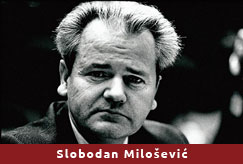 The narrative that
developed over the course of the
trial tracked Milošević’s political
motivations, objectives, and
intentions and the trial record
provides a unique chance for
historians to revisit existing
disputes and controversies about
historical details, the legality of
particular political decisions and
actions, and the real nature of
policies implemented by leaders at
both the republic and federal
levels. Many politicians who were in
power at the outbreak of violence in
fact testified as Prosecution or
Defence witnesses.9 Their testimonies
were further enriched by Milošević’s
courtroom performance – his
comments, protestation, denials, and
even his body language regularly
gave away more than he would have
revealed had he not represented
himself.10 The narrative that
developed over the course of the
trial tracked Milošević’s political
motivations, objectives, and
intentions and the trial record
provides a unique chance for
historians to revisit existing
disputes and controversies about
historical details, the legality of
particular political decisions and
actions, and the real nature of
policies implemented by leaders at
both the republic and federal
levels. Many politicians who were in
power at the outbreak of violence in
fact testified as Prosecution or
Defence witnesses.9 Their testimonies
were further enriched by Milošević’s
courtroom performance – his
comments, protestation, denials, and
even his body language regularly
gave away more than he would have
revealed had he not represented
himself.10
The part Milošević
played in events of the 1980s and
1990s has also been explored in a
number of political biographies and
is an important sub-topic of
analysis. However, the most
well-known of these biographies,
written in both English and Serbian,
were published before his trial or
in the same year that it started.11
This means that few authors have
presented the trail of evidence that
was followed in the courtroom to
establish responsibility for the
break-up of Yugoslavia and, more
importantly, the violence that
followed.
Did Milošević
genuinely try to save Yugoslavia?
Did he, together with others,
inadvertently cause its
disintegration through a series of
well-intended blunders?12 Or, did he
actively work to re-draw its
borders?
A majority of
authors agree that Milošević played
a central role in events that
unfolded in the former SFRY between
1987 and 1999. For the purposes of
this study, three categories of
interpretations of Milošević’s role
in the disintegration of Yugoslavia
have been identified:
intentionalist, relativist, and
apologist.13 ‘Intentionalists’ see
Milošević as having dictated the
pace of the Yugoslav crisis through
well-articulated and planned
objectives that drove the other
republics away.14 According to this
view, violence was used cynically
and practically with a clear
purpose. The intentionalist
perspective is that violence against
non-Serbs was the result of a
pre-meditated strategy – the success
of which is irrelevant – to secure
Milošević’s promise of “All Serbs in
a Single State” at any cost.15
Alternative to
this are authors who tend to see
Milošević as an intelligent and
ruthless politician but not a good
tactician or strategist, whose
politics were mostly reactive.16 These
‘relativists’ see Milošević’s
policies as responses to
developments that were driven by
leaders of Slovenia, Croatia, BiH,
and Kosovo, and by the international
community. From this standpoint,
Milošević genuinely wanted to
preserve Yugoslavia but did not
succeed.17 Relativists perceive
Milošević as an immensely ambitious
politician who endeavoured to
achieve more than he was capable of;
and his rule has been cast by
authors in this camp as a sequence
of mistakes and failures – at the
national and international levels.18
The violence that accompanied the
disintegration of Yugoslavia is thus
explained as resulting from a
complicated interplay of many
factors, leading to an escalation of
the crisis that was beyond the
control of Milošević alone.
‘Apologists’ share
the opinion held by relativists
regarding the role of the republics
that sought independence and of the
international community in the
disintegration of Yugoslavia. Yet
they not only see his goal to
preserve Yugoslavia as
well-intentioned but also defend his
politics and decision-making in
general.19 They downplay Milošević’s
calculating and ruthless side to
recast him as a somewhat clumsy,
wayward, and inconsistent
authoritarian leader who merely
failed to deliver on promises he
made.20
In fact,
apologists frame Milošević as an
atypical authoritarian ruler who
could have secured his power by
force but was willing, instead, to
compromise his initial goals.21
Apologists also dismiss arguments
about the influence of Greater
Serbia ideology on Milošević or on
Serbia’s involvement in the ethnic
cleansing in Croatia, BiH, or
Kosovo. They stress that it was NATO
that committed grave crimes in
Serbia and Kosovo, for which nobody
has been held accountable. And, as
to Milošević’s domestic criminality,
some apologists say that there has
been no definitive proof of his
personal involvement in
assassinations that took place
during his rule; and some go further
in their absolution of him, arguing
that even if he did play a role in
these murders, there were “not many
such examples.”22 Apologists see
Milošević as having been a true
statesman who resisted foreign
pressure.23
TRIAL EVIDENCE AND HISTORICAL
NARRATIVE ON SERBIA’s ROLE IN
DISINTEGRATION OF the SFRY
For the purpose of
this study, the Slobodan Milošević’s
ICTY trial archive record will be
analysed in search for the material
about three events that are still a
matter of historical controversies
as it has still be contested if the
events ever took place or if they
did happen what is their historical
and political significance. As
illustration the historical
significance of the mass atrocities
trial archives, three events will be
examined by using the material
available in the ICTY trial record
of the Slobodan Milošević’s
unfinished trial: (1) Greater Serbia
as Serbian State Ideology in the
1990s (2) the SANU Memorandum – an
ideological blueprint for Serbia’s
politics under Slobodan Milošević?
(3) the Karađorđevo meeting of March
1991and the premeditated plans to
partition Bonsia and Herzegovina
GREATER SERBIA AS SERBIAN STATE
IDEOLOGY in the 1990s
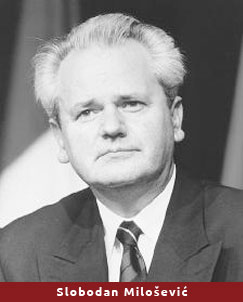 Questions about
Milošević’s role in the collapse of
the SFRY are most relevant where
they concern how it became violent.
When, why, and by whom was violence
unleashed? And for what purpose? In
scholarly literature, the outbreak
of violence has often been ascribed
to Greater Serbia ideology and
efforts to create a Serb state. Some
authors hold that Milošević’s plans
corresponded with the historical
goals of Greater Serbia ideologues
but that his political choices
actually had no basis “in any
particular scheme.”24 Criminal
investigations into the language of
leaders attempt to uncover
derogatory and racist words that
might represent prejudice or hatred
toward members of a targeted enemy
group. This evidence is essential to
revealing the state of mind of an
accused, needed to establish
criminality. To prove a criminal
case, both the words and deeds of an
accused are equally important.
Although actus reus – the criminal
act itself, such as killing or rape
– is an essential starting point for
every criminal investigation,
proving the criminality of a
political leader focuses more on
mens rea, the criminal mind, which
must be shown to have led to or
accompanied the actus reus.
Throughout the Milošević trial,
witnesses who were once close to or
engaged in political negotiations
with him testified that there was
often a discrepancy between
Milošević’s words and deeds. So,
what were Milošević’s true
intentions and why did he try to
obscure his political goals? Was it
because he knew that the creation of
a single state for all Serbs could
be achieved only through violence
against non-Serbs? Questions about
Milošević’s role in the collapse of
the SFRY are most relevant where
they concern how it became violent.
When, why, and by whom was violence
unleashed? And for what purpose? In
scholarly literature, the outbreak
of violence has often been ascribed
to Greater Serbia ideology and
efforts to create a Serb state. Some
authors hold that Milošević’s plans
corresponded with the historical
goals of Greater Serbia ideologues
but that his political choices
actually had no basis “in any
particular scheme.”24 Criminal
investigations into the language of
leaders attempt to uncover
derogatory and racist words that
might represent prejudice or hatred
toward members of a targeted enemy
group. This evidence is essential to
revealing the state of mind of an
accused, needed to establish
criminality. To prove a criminal
case, both the words and deeds of an
accused are equally important.
Although actus reus – the criminal
act itself, such as killing or rape
– is an essential starting point for
every criminal investigation,
proving the criminality of a
political leader focuses more on
mens rea, the criminal mind, which
must be shown to have led to or
accompanied the actus reus.
Throughout the Milošević trial,
witnesses who were once close to or
engaged in political negotiations
with him testified that there was
often a discrepancy between
Milošević’s words and deeds. So,
what were Milošević’s true
intentions and why did he try to
obscure his political goals? Was it
because he knew that the creation of
a single state for all Serbs could
be achieved only through violence
against non-Serbs?
Since 19th
century, Greater Serbia ideology is
associated with territorial
expansionism, advocating that the
Serbian state be enlarged to the
south (into Macedonia and Kosovo)
and to the west (into BiH and
Croatia). Early proponents of a
Greater Serbia aspired to expand
Serbian borders into Ottoman and
then Habsburg territories – which
had ethnically mixed populations
with large numbers of non-Serbs –
and the Prosecution argued that this
history of efforts to enlarge
Serbian territory was one of mass
atrocities against those non-Serb
populations. In establishing
Milošević’s criminal state of mind,
it was essential for the Prosecution
to present evidence on his adoption
of this ideology that has long
inspired attempts by Serbian
political elites to create an
ethnically-defined Serbian state;
efforts known to frequently have
been accompanied by violence.25
Greater Serbia Ideology and a
History of Violence:
From Terrorism to Mass Atrocities
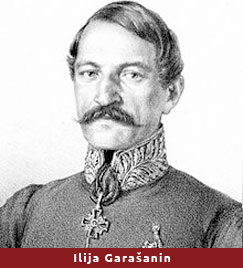 Expert witnesses
for both the Prosecution and Defence
addressed the history of the Greater
Serbia concept. Prosecution Expert
Witness on history Audrey Budding
credited the term to Serbian
politician Ilija Garašanin
(1812-1874), who wrote a short
nationalistic manifesto in 1844
known as Načertanije (The Outline),
which identified the borders of a
future Serbian state.26 The document
was kept secret until it was finally
published in 1906.27 Since Garašanin’s
time, there has been much debate
over his ideology and what the
notion of Greater Serbia implies. Is
it a unified South Slavic state
incorporating a large number of
non-Serbs, or a Serbian national
state meant to unite Serbs and
connect all predominantly Serb
territories? In other words, does it
reflect Yugoslavism or Serb
nationalism? Expert witnesses
for both the Prosecution and Defence
addressed the history of the Greater
Serbia concept. Prosecution Expert
Witness on history Audrey Budding
credited the term to Serbian
politician Ilija Garašanin
(1812-1874), who wrote a short
nationalistic manifesto in 1844
known as Načertanije (The Outline),
which identified the borders of a
future Serbian state.26 The document
was kept secret until it was finally
published in 1906.27 Since Garašanin’s
time, there has been much debate
over his ideology and what the
notion of Greater Serbia implies. Is
it a unified South Slavic state
incorporating a large number of
non-Serbs, or a Serbian national
state meant to unite Serbs and
connect all predominantly Serb
territories? In other words, does it
reflect Yugoslavism or Serb
nationalism?
In his Opening
Statement, Milošević asserted that
the concept of Greater Serbia had
been invented for a propaganda
campaign launched by the
Austro-Hungarian Empire. When
Ottoman territory conquered by
Christian powers was redistributed
in 1878 by the Congress of Berlin,
BiH became an Austro-Hungarian
protectorate, to the great
consternation of the adjacent
emerging Kingdom of Serbia.28 Between
1878 and 1914, the relationship
between the Kingdom of Serbia and
the Austro-Hungarian Empire was
dominated by a rivalry over BiH
territory, which worsened when
Austro-Hungary annexed BiH in 1908.
Milošević cited that rivalry as the
reason the Austro-Hungarian Empire
had devised the “Greater Serbia”
concept, in order to accuse the
Kingdom of Serbia of expansionism.29
Čedomir Popov, a
Defence witness on the topic,
similarly claimed that the concept
of Greater Serbia was a consequence
of the power struggle for territory
between the Austro-Hungarian
monarchy and the Serbian kingdom. He
testified that the “myth” of Greater
Serbia ideology had been fostered as
a scare tactic, saying it:
...was nurtured and further
developed after the 1878 Berlin
Congress, acquiring the character of
a never-ending political and
religious campaign. The aim of this
campaign and the creation of the
myth was threefold; to prevent the
creation of a Serbian state within
its national borders, to conceal the
fact that Austria possessed some of
the Serbian and Balkan territories
and aspired to others, and to open
the routes to a Catholic missionary
campaign among the Orthodox
population of Southeastern Europe.
No effort was spared to spread the
myth about a Greater Serbian
threat...30
A number of
Defence witnesses repeated the
explanation Milošević and Popov
offered for the negative connotation
attached to the term Greater Serbia,
asserting it was a foreign invention
meant to discredit Serbia – an
emerging political power in the late
19th century – and prevent its
westward expansion.31 Defence Expert
Witness Kosta Mihailović also
brought up the role of two
well-known Serbian socialists,
Dimitrije Tucović (1881-1914) and
Svetozar Marković (1846-1876), who
he claimed contributed to a negative
appraisal of the term by applying it
to Serbian expansionist policies in
the second half of the 19th and
beginning of the 20th centuries, and
whose views he said were due to
“unyielding” ideological positions
that were “one-sided.”32
Čedomir Popov also
claimed that Načertanije had not
advocated aggression and therefore
should not be seen as having
instigated violence.33 Instead, Popov
argued, Garašanin’s plan focused on
integrating lands claimed by Serbia
on linguistic and religious grounds
– BiH, Northern Albania
(specifically Kosovo and Metohija),
and Montenegro – allowing Serbia to
unite all Serbs while leaving the
door open to other South Slavic
nations, including Bulgarians as
well as Croats from Slavonia,
Croatia, and Dalmatia. According to
Popov, Garašanin’s primary aim was
to liberate Serbs in the Balkans
from Ottoman rule, invoking their
“sacred historical right” based on
the pre-Ottoman legacy of the 14th
century Serbian state under Tsar
Dušan the Mighty.34
Asked by the
Prosecution to comment on the
proposition that a future Serbian
state as envisaged by Garašanin
would have been based on historic,
ethnic, religious, linguistic, and
geostrategic criteria and be led by
a Serb dynasty, Popov replied that,
indeed, Načertanije advocated the
national interest of Serbs, but he
said that similar nationalist and
irredentist35 conceptions “prevailed
throughout Europe in the 19th
century” and that “Serbs also had
the right to espouse such an idea.”36
In his Expert Report, Popov
characterised Greater Serbia
ideology as a myth that had been
“nourished, fostered, and spread” to
destabilise Serbia, which he claimed
in court was meant to enforce a
stereotype against Serbs as
hegemonic. When Milošević asked if
he in fact saw Serbia as a “victim
nation and a victim state,” Popov
said that he did.37 His answer
reflected the ideological framework
of Serb victimhood by which Serb
nationalist elites had mobilised
social action in Kosovo in the
1980s.
A History of Expansion of the
Serbian State by Force, 1912-1941
The Balkan Wars, 1912-1913
Serbian state
borders were redrawn twice during
the Balkan Wars, waged in 1912 and
1913, in which emerging Balkan
states fought the Ottoman Empire.
Serbia extended its borders south,
to Vardar Macedonia (a region now in
northern Macedonia) – also known as
Old Serbia because it was part of
the medieval Kingdom of Dušan the
Mighty – and into Kosovo and parts
of Sandžak. These conquests meant
that the Kingdom of Serbia
incorporated large numbers of
non-Serbs.38
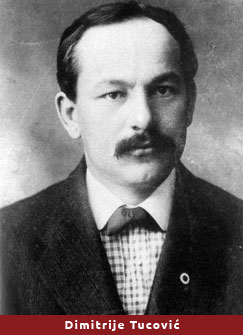 In his Expert
Report, Defence witness Kosta
Mihailović wrote that Serbian
socialist Dimitrije Tucović had
asserted at the time of the Balkan
Wars that Serbia’s 1912 military
incursion into the northern parts of
Albania proved it was trying to
conquer that territory as well, with
aspirations to gain an outlet to the
Adriatic Sea. Mihailović contested
this, saying that it was in fact the
threat of the creation of a Greater
Albania that had spurred the start
of the Balkan Wars in the first
place.39 But it wasn’t just the
Albanians who had expansionist
ideas, and the danger of competing
irredentist or separatist claims had
been recognised in the late 19th
century by another Serbian
socialist, Svetozar Marković, who
drew attention to the hypocrisy of
Serbia for asserting the right to an
exclusive state in the Balkans but
denying that right to others.
Marković was also quoted by
Mihailović in his Report, though
Mihailović dismissed Marković’s
concerns by asserting that “it can
be reasonably assumed that he did
not know the real intentions of
[Serbian] policy.”40 In his Expert
Report, Defence witness Kosta
Mihailović wrote that Serbian
socialist Dimitrije Tucović had
asserted at the time of the Balkan
Wars that Serbia’s 1912 military
incursion into the northern parts of
Albania proved it was trying to
conquer that territory as well, with
aspirations to gain an outlet to the
Adriatic Sea. Mihailović contested
this, saying that it was in fact the
threat of the creation of a Greater
Albania that had spurred the start
of the Balkan Wars in the first
place.39 But it wasn’t just the
Albanians who had expansionist
ideas, and the danger of competing
irredentist or separatist claims had
been recognised in the late 19th
century by another Serbian
socialist, Svetozar Marković, who
drew attention to the hypocrisy of
Serbia for asserting the right to an
exclusive state in the Balkans but
denying that right to others.
Marković was also quoted by
Mihailović in his Report, though
Mihailović dismissed Marković’s
concerns by asserting that “it can
be reasonably assumed that he did
not know the real intentions of
[Serbian] policy.”40
The Serbian
conquest of territory in Kosovo
during the Balkan Wars involved
atrocities committed by Serbian and
Montenegrin soldiers, which some
observers saw as a systematic
attempt by the Serbian military to
alter the demographic balance of the
region in order to justify the
incorporation of Kosovo into the
Serbian state.41 On this issue,
Prosecution Expert Witness Budding
referred to the Carnegie Endowment’s
1914 Report of the International
Commission to Inquire into the
Causes and Conduct of the Balkan
Wars, which chronicled these
atrocities:
Houses and whole villages reduced to
ashes, unarmed and innocent
populations massacred en masse,
incredible acts of violence, pillage
and brutality of every kind – such
were the means which were employed
and are still being employed by the
Serbo-Montenegrin soldiery, with a
view to the entire transformation of
the ethnic character of regions
inhabited exclusively by Albanians.42
Defence witness
Čedomir Popov recognised that
atrocities had been committed by
Serbian forces; but he contended
that they were only in response to
attacks by Albanian units, which he
claimed were motivated by the
Albanian majority’s refusal to
accept Serbian authority.43
Slavenko Terzić,
who was called by the Defence as an
Expert Witness on the history of
Kosovo, notably omitted any
reference to the Balkan Wars in his
Expert Report. Yet, this particular
episode in the history of Kosovo and
Serbia is undeniably significant
because, in 1913 – after almost 500
years – Serbia repossessed Kosovo
from the retreating Ottoman Army and
incorporated its territory into the
expanding Kingdom of Serbia. In the
Prosecution’s cross-examination,
Terzić was asked why he hadn’t
mentioned these historical events,
including mass atrocities committed
against Kosovo Albanians by Serb
soldiers, in his Report. Terzić
accepted that the Carnegie
Endowment’s accounting of the extent
of the atrocities was probably
accurate, but said that they were
the expected consequences of war. He
rejected the Prosecution’s
suggestion that these atrocities
resulted from a Serbian government
plan to ethnically cleanse that
territory, concluding that such a
plan would have been implemented if
it existed.44 Terzić also failed to
mention the Serbian government’s
Kosovo colonisation programme in his
Report, though it was significant
for having offered certain economic
privileges to Serbs who were willing
to settle in Kosovo after 1913. As
Audrey Budding explained, the
purpose of the programme was to
change the ethnic composition of
Kosovo in favour of Serbs; but the
scheme never really worked and
Kosovo Albanians maintained a
majority.45
The First World War, the London
Treaty of 1915, and a Greater Serbia
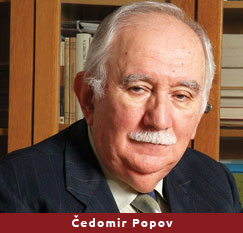 In questioning
Čedomir Popov, the Prosecution
pressed the matter that some of the
first Greater Serbia ideologues had
advocated violence for the purpose
of unifying Serb-claimed
territories, asking about the early
20th-century organisation known as
both “Unification or Death”
(Ujedinjenje ili smrt) and the
“Black Hand” (Crna ruka). Popov
corroborated that, indeed, a member
of the organisation had assassinated
Aleksandar Obrenović – the last king
of the Obrenović Dynasty – in 1903.
Obrenović was known for having
cultivated a good relationship with
Austro-Hungary, then seen by Serb
nationalists as the major obstacle
to territorial expansion and a
specific challenge to territorial
aspirations in BiH. The same group
was also involved in the
assassination of Franz Ferdinand in
Sarajevo in 1914.46 In questioning
Čedomir Popov, the Prosecution
pressed the matter that some of the
first Greater Serbia ideologues had
advocated violence for the purpose
of unifying Serb-claimed
territories, asking about the early
20th-century organisation known as
both “Unification or Death”
(Ujedinjenje ili smrt) and the
“Black Hand” (Crna ruka). Popov
corroborated that, indeed, a member
of the organisation had assassinated
Aleksandar Obrenović – the last king
of the Obrenović Dynasty – in 1903.
Obrenović was known for having
cultivated a good relationship with
Austro-Hungary, then seen by Serb
nationalists as the major obstacle
to territorial expansion and a
specific challenge to territorial
aspirations in BiH. The same group
was also involved in the
assassination of Franz Ferdinand in
Sarajevo in 1914.46
Popov, who had
initially rejected the Prosecution’s
proposition that Greater Serbia
ideology was linked to violence, was
challenged to admit that terrorism
had indeed marked early attempts at
Serbian irridentism. He agreed that
the assassinations of King
Aleksandar and Archduke Franz
Ferdinand represented a shift toward
support for a more violent approach
by the Black Hand, which he
described as a paramilitary
organisation comprised of active
army officers of the Serbian Royal
Army. The objective of the group, he
said, was Serbia’s unification with
Serbs from Bosnia, an aim which he
claimed was fully supported by
Bosnian Serbs.47 Popov denied that the
assassination of Archduke Ferdinand
in 1914 was an expression of Greater
Serbia ambitions, though, asserting
that Bosnian Croats and Bosnian
Muslims were members alongside
Bosnian Serbs of Young Bosnia (Mlada
Bosna), the organisation that
actually carried out the
assassination. According to Popov,
Young Bosnia representatives sought
support from the Black Hand when
they were refused assistance from
the Serbian government.48 The
assassination was of course seen as
triggering the outbreak of the First
World War, during which the
Austro-Hungarian Empire
disintegrated and after which BiH
became part of a newly formed
Kingdom of Yugoslavia.
The Defence
position was that Serbs had never
aspired to form a Greater Serbia,
and had even rejected an enlarged
state when it was offered to them in
the 1915 London Treaty, preferring
instead to form a joint state with
the Slovenes and Croats. Milošević
introduced this notion in his
Opening Statement in August 2004,
stressing that the Serbs had
rejected the London Treaty despite
promises by the Allies to expand
Serbia to include territories in BiH
and Croatia:
To make the irony and absurdity even
greater and to make the lies and
injustice against the Serbian people
even worse...it is well known that
in 1915, the allies of Serbia, in
the so-called London Treaty, offered
Serbia, after winning the war, an
extension of its territory to Bosnia
and Herzegovina, parts of Dalmatia,
parts of Slavonia, and so on and so
forth. There are documents to show
all this. But Serbia did not do
this. Serbia instead embraced and
espoused Serbs, Croats, and Slovenes
alike from the former territories of
the Austro-Hungarian Empire, and
this is how the Kingdom of Croats,
Serbs and Slovenes was created,
later on to be called Yugoslavia.
This option taken by the Serbian
state to create a common state of
Yugoslavia rather than their own
state provided protection to our
Croatian and Slovenian brothers. We
protected them from territorial
fragmentation. And also, after they
had been part of a defeated state,
they became part of the winning
camp.49
Popov
contextualised the London Treaty
historically and politically, saying
that Austro-Hungary was the enemy
state and its territory had been
offered to Italy by the British in
order to get Italy involved in the
war on the side of the Allies.
According to Popov, Serbia was not
involved at all in these secret
negotiations; but the British had
agreed with Italy to the division of
a considerable part of the
Austro-Hungarian Empire, with the
rest going to either Serbia or a
common Serb, Croat, and Slovene
state.50 Further, Popov testified,
there were two London Treaty Maps,
the second of which dealt
specifically with Serbia. This
second map captured changes made to
the first, he said, and marked the
territories offered up to Serbia,
including Macedonian territory, as
compensation for the fact that
Serbia had lost Dalmatia to Italy.51
Popov explained that Serbia was also
offered Bosnia, Eastern Slavonia,
Bačka, Srem (Syrmia), and the part
of Dalmatia from north of Split up
to the Planck peninsula. He
commented that this was more
territory than Serbia ever
considered rightfully due.52
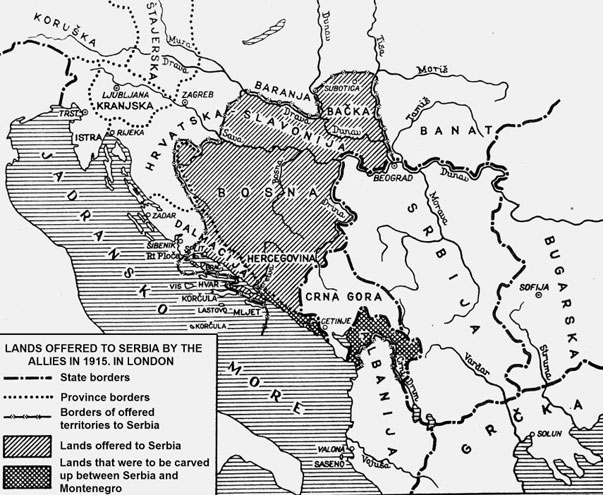
Map 2: London
Treaty Map showing land offered to
Serbia in 1905 by the Allied Forces
The First Yugoslavia or Greater
Serbia?
The contention of
the Defence was that the London
Treaty could have secured what was,
in effect, a Greater Serbia, but
that the Kingdom of Serbia had
rejected this prospect because it
chose instead to liberate Slovenes,
Croats, and Serbs who lived under
Austro-Hungarian rule. Popov
testified that Serbia’s war aims had
been laid out in the 1914 Niš
Declaration and favoured the
creation of a common Yugoslav state.53
However, Prosecution Expert Witness
Budding offered a different
interpretation of these events,
saying that Serbian political elites
in fact saw a common state as an
expanded Serbian state, not as a
Yugoslav state, which was then a
fundamentally new concept. Budding
testified that, at the time, the
notions of Greater Serbia and
Yugoslavia were synonymous, at least
in the minds of political decision
makers. According to her, the Niš
Declaration was a continuation of
Serbia’s pursuit of the unification
of all Serbs.54
Croat representatives in the
negotiations that preceded the
creation of the first Yugoslav state
advocated for a confederation;
though they eventually compromised
with the Serbs and established the
Kingdom of Serbs, Croats, and
Slovenes under the Serb royal
dynasty of Karađorđević.55 As Audrey
Budding noted, there were Serbian
intellectuals who also saw the
importance of making a distinction
between a common state and the
expansion of Serbian domination, and
pushed for a federal state that
would decentralise power.56 In 1929,
the Kingdom of Serbs, Croats, and
Slovenes changed its name, becoming
the Kingdom of Yugoslavia, or the
First Yugoslavia. The state was
troubled by inter-ethnic relations
and growing Serbo-Croatian conflict.
Still, Serbia did engage in
political dialogue with Croats and
Slovenes and treated them as equal
nations; but its relationship with
other ethnic groups – the Bosnian
Muslims, the Macedonians, and the
Kosovo Albanians – remained
problematic.
An extreme example of how some Serbs
felt the non-Serb population should
be dealt with was found in yet
another document that remained
hidden away from the public for
years, at the Institute for Military
History in Belgrade, titled “The
Resettlement of the Arnauts”
(Iseljavanje Arnauta).57 The term
‘Arnauts’ was used to denote ethnic
Albanians, and the document
recommended moving the Albanian
population to Turkey and paying the
Turkish government as compensation
for resettlement costs. The proposal
was written by Vasa Ćubrilović, then
a junior historian who was known for
his Young Bosnia membership at the
time of the assassination of Franz
Ferdinand. Ćubrilović wrote the
document when he was an Assistant
Professor at the University of
Belgrade and presented it at a
session of the Serbian Cultural Club
in 1937. The Club was an
establishment for the elite,
including prominent Serb
politicians, high-ranking military
personnel, and intellectuals with
considerable influence over politics
and public opinion.
The Second World War and the
Historical Legacy of
Moljević’s
“Homogeneous Serbia”
The disintegration of the First
Yugoslavia in 1941 and its partition
among the Third Reich, Italy, and
neighbouring Nazi satellite states –
such as Hungary and Bulgaria –
redrew the map of Yugoslavia
considerably. Croatia was rewarded
with more territory for its alliance
with the Third Reich, extending its
borders to the east by annexing BiH
and Syrmia and reaching as far as
the suburban town of Zemun in the
vicinity of Belgrade. The Serbs, on
the other hand, were left by Nazi
Germany with a Serbian state that
was much smaller than the new
Independent State of Croatia
(Nezavasina država Hrvatska, or
NDH). The NDH was led by the extreme
right Ustasha movement, which
started exterminating Serbs, Roma,
Jews, and Communists in the
Jasenovac concentration camp in
order to change the ethnic
composition of the NDH in favour of
Croats.
In both Nazi Serbia and the NDH,
several Serb Chetnik guerrilla units
were active. The Chetnik guerrillas
under the command of Colonel Draža
Mihailović were considered by Allied
Forces to be a royal army and were
seen as an official resistance
movement until 1943, when Tito’s
victorious communist guerrillas,
known as the Partisans, became the
only recognised resistance movement
on the territory of the former
Kingdom of Yugoslavia. One of the
ideologues of the Chetnik guerrilla
movement was Stevan Moljević
(1888-1959), a lawyer from Banja
Luka who was a member of the Serbian
Cultural Club. In 1941, he authored
a pamphlet titled “Homogeneous
Serbia” (Homogena Serbia), which
revitalised Greater Serbia ideology
in the political and military
context of the Second World War and
the changing European State System.
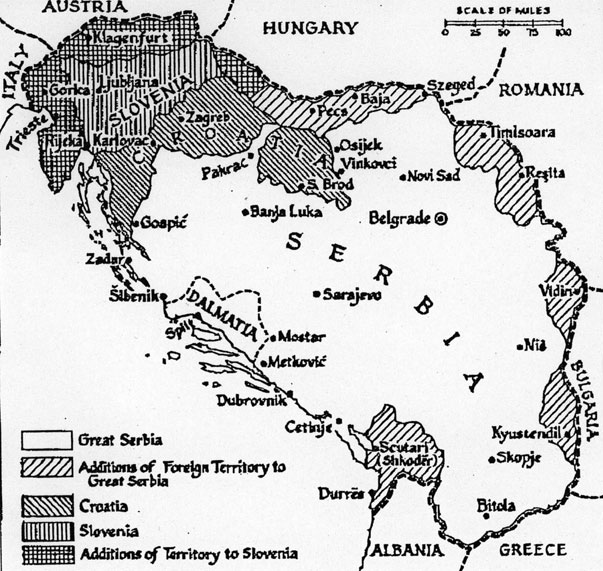
Map 3: Moljević’s Map of Greater
Serbia. From Izvori Velikosrpske
Agresije,
page 146, Exhibit P807.
Asked by Milošević to comment on
Moljević’s contribution to the
Chetnik movement and Greater Serbia
ideology, Čedomir Popov testified
that it was Ustasha terror against
Serbs in the NDH that led to the
Chetnik movement. He described the
Chetniks as an incoherent group, but
said that, for some time, Draža
Mihailović’s movement indeed seemed
to have adopted Moljević’s ideas.
According to Popov, Moljević
envisaged a Greater Serbia that
would encompass even more territory
than offered by the London Treaty in
1915:
...Moljević envisaged that this
should be a homogenous Serbia from a
national point of view along the
following lines: The non-Serb
population will be allowed to leave
on their own or will be exchanged
for those Serbs which remain outside
this Greater Serbia. This programme
was rejected by the Chetniks
themselves. It was revised at the
so-called Sveti Sava Congress in the
village of Bar in January 1944 when,
under pressure exerted by the Allies
and because of the general feeling
that prevailed among the Allies, a
decision was made to create a
federative Yugoslavia with Serbia at
its centre.58
The historical importance of the
Moljević map for the development of
Greater Serbia ideology is in its
demarcation of a Western border
running from the Northern Croatian
town of Virovitica, through
Karlovac, to Karlobag in the South
of Croatia. The Prosecution asked
Popov to comment on Moljević’s map,
and in particular on the proposed
boundary, which would have left
Croatia as a very narrow strip of
territory beyond the projected
Virovitica-Karlovac-Karlobag (V-K-K)
line. Popov asserted that this
border was not accepted by all
Serbs,59 and indeed, that’s possible;
but the V-K-K line grew to be seen
by many as a potent and enduring
representation of Greater Serbia
ideology and proved relevant to the
war in Croatia in 1991.
The SANU MEMORANDUM - AN IDEOLOGICAL
BLUEPRINT FOR
SERBIA’S POLITICS
UNDER SLOBODAN MILOŠEVIĆ?
It is hard to find any literature on
the Yugoslav crisis that does not
make note of connections between the
SANU Memorandum and the political
programme introduced by Milošević,
but there are various perspectives
on the nature of these connections.
One view is that the Memorandum
served as the “blueprint” for
Milošević’s war policies.60 Another is
that it more generally advocated “a
reformed federation.”61 And
alternative to both of these is the
view that the Memorandum can be seen
as an “explicit post-Yugoslav
Serbian national program.”62 Some
authors argue that the Memorandum
did not advocate the dissolution of
Yugoslavia, the creation of a
Greater Serbia, or ethnic cleansing,
and that no connection has been
established between the authors of
the Memorandum and Milošević.
According to some authors at the
time of the Memorandum’s
publication, Milošević’s views were
no different from other Serbian
communist leaders.63 Nonetheless, some
ICTY witnesses talked in court about
the importance of the SANU
Memorandum, and the polarised
narratives that unfolded followed
the fault lines of pre-existing
scholarly debate on the importance
of the Memorandum. And once again,
this courtroom narrative was
significantly shaped by Milošević’s
active participation in court,
discussing his position on the SANU
Memorandum with several of its
authors who appeared as Defence
witnesses.64
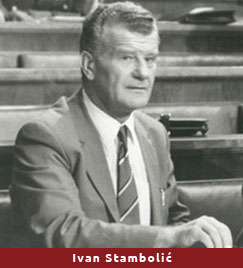 In 1985, Serbian political leaders
approved a proposal by members of
the Serbian Academy of Sciences and
Arts (SANU) that they contribute to
solving the profound social,
economic, and political crises
facing Yugoslavia and the Republic
of Serbia at the time. Stambolić
consented to the endeavour because
he firmly believed that science
should be part of those efforts. The
SANU leadership organised several
expert teams, each of which analysed
different aspects of the crisis and
made proposals for how to resolve
them.65 The product of this work – the
SANU Memorandum – took Stambolić by
surprise, and he qualified it as an
“obituary for Yugoslavia.”66 He felt
that the recommendations advanced in
the document were contrary to the
interests of Serbs in Yugoslavia,
whom he felt were best served by a
common state. Stambolić was one of
the first communist officials to
criticise the Memorandum in public,
warning against the dangers of
attempts to “unite” Serbs on the
ruins of Yugoslavia, and saying
presciently that this would lead to
conflict with other Yugoslav nations
and with the rest of the world. In 1985, Serbian political leaders
approved a proposal by members of
the Serbian Academy of Sciences and
Arts (SANU) that they contribute to
solving the profound social,
economic, and political crises
facing Yugoslavia and the Republic
of Serbia at the time. Stambolić
consented to the endeavour because
he firmly believed that science
should be part of those efforts. The
SANU leadership organised several
expert teams, each of which analysed
different aspects of the crisis and
made proposals for how to resolve
them.65 The product of this work – the
SANU Memorandum – took Stambolić by
surprise, and he qualified it as an
“obituary for Yugoslavia.”66 He felt
that the recommendations advanced in
the document were contrary to the
interests of Serbs in Yugoslavia,
whom he felt were best served by a
common state. Stambolić was one of
the first communist officials to
criticise the Memorandum in public,
warning against the dangers of
attempts to “unite” Serbs on the
ruins of Yugoslavia, and saying
presciently that this would lead to
conflict with other Yugoslav nations
and with the rest of the world.
In the months following a ‘leaked’
disclosure of the Memorandum in
1986, it was the topic of discussion
at all Party forums. Unlike fellow
politicians Stambolić and Dragiša
Pavlović, Milošević remained silent;
he was diligent about not speaking
against the Memorandum in public,
though he did allow for some
criticism of it by others in less
public settings.67 And while he never
commented on the contents of the
Memorandum itself, Milošević
defended the Academy on a number of
different occasions, saying that it
was only natural that an institution
of the highest intellectual and
moral standards would deal with
solving complex issues like the
Yugoslav crisis.68
The Prosecution mentioned the SANU
Memorandum only briefly in its
Opening Statement, referring to the
threat it had alleged faced Serbs in
Kosovo and Croatia and how that
rhetoric contributed to creating
fear among Serbs.69 But the Memorandum
kept cropping up in evidence as the
trial went on, progressively
revealing its importance as an
apparent blueprint for the political
programme that had been implemented
by Milošević. The central arguments
in the Memorandum were based on the
notion that economic and political
systems had suffered negative
consequences as a result of the 1974
Yugoslav Constitution, by which the
Federation had become a
confederation. According to the
Memorandum’s authors, the 1974
Constitution made the Yugoslav
political system “a textbook case of
inefficiency” and they argued that
the only way out of the crisis was
to abandon the political and
economic systems that were based on
that Constitution.70 They also
identified three additional issues
confronting Serbia in the
Federation: its economic
underdevelopment, its unresolved
relationship with the state and the
provinces, and “the genocide in
Kosovo.”71 These and other very
serious charges painted a dim
picture of life for Serbs and
included accusations that the Serb
population in Kosovo and Croatia had
been threatened by “physical,
political, legal, and cultural
genocide” that had directly affected
the ethnic balance in the Yugoslav
Federation.72 The conclusion of the
Memorandum’s authors was that the
root of both the Yugoslav crisis and
the Serbian crisis lay in
Yugoslavia’s decentralisation. They
called for transforming Yugoslavia
and referred, though only in
passing, to the possibility of its
collapse.73
The Memorandum’s one-sided emphasis
on Serbian victimisation was
reflected in all forms of public
debate in the years that followed.
But Prosecution Expert Budding
suggested that the content of the
Memorandum was not its most relevant
feature; she considered it most
significant for the way in which it
had been introduced to the public
and how it had polarised Serbian
political leadership.74 Budding also
drew attention to the fact that,
unlike previous critics of the 1974
Constitution, the authors of the
SANU Memorandum catalogued
pre-existing grievances together
with one important and
groundbreaking new inference – that
Serbs might be able to do without
Yugoslavia.75
Authors of the Memorandum Appear as
Defence Witnesses
In his Opening Statement in February
2002, Milošević said that the
indictments against him accused not
just him but the whole Serb nation,
beginning with the Serbian
intelligentsia and members of the
SANU. He defended the SANU and the
Memorandum, saying that Serbian
academics had responsibly and
authoritatively described the
situation in Kosovo.76 Though he had
hardly ever spoken publicly of the
Memorandum and it was difficult to
prove that he had even read it, its
role in shaping his ideology became
clear when Milošević called some of
its most prominent authors to the
stand for his Defence. The fact that
they were asked to appear spoke
volumes despite his reticence.77
Professor Kosta Mihailović, an
economist who was among the
Memorandum’s authors, was an advisor
to Milošević at all major
negotiations in the early 1990s; he
testified as an expert witness on
the topic of Serbia’s economic
sluggishness in the First Yugoslavia
(1918-1941), and also about the
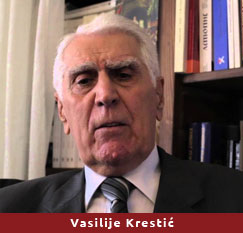 Memorandum and Milošević’s attitude
toward it. In 1993, Mihailović had
co-authored a book titled Memorandum
of the Serbian Academy of Sciences
and Arts: Answers to Criticisms in
which he and Vasilije Krestić – a
Professor of History and fellow SANU
member who was responsible for the
part of the Memorandum that
addressed the history of genocide
against Serbs – explained why and
how the Memorandum was written.
While Mihailović confirmed in his
testimony that there was indeed a
link between the ideas in the
Memorandum and the views of
Milošević on legal, political, and
economic aspects of the crisis, in
the book, he and Krestić denied that
this was anything but coincidental: Memorandum and Milošević’s attitude
toward it. In 1993, Mihailović had
co-authored a book titled Memorandum
of the Serbian Academy of Sciences
and Arts: Answers to Criticisms in
which he and Vasilije Krestić – a
Professor of History and fellow SANU
member who was responsible for the
part of the Memorandum that
addressed the history of genocide
against Serbs – explained why and
how the Memorandum was written.
While Mihailović confirmed in his
testimony that there was indeed a
link between the ideas in the
Memorandum and the views of
Milošević on legal, political, and
economic aspects of the crisis, in
the book, he and Krestić denied that
this was anything but coincidental:
The insinuation that Slobodan
Milošević was carrying out a
national agenda contained in the
Memorandum is a pure fabrication.
This claim was inspired by the
course of events and the
anti-Serbian propaganda’s need to
keep the official and unofficial
organs of Serbia under a constant
barrage of accusations.... Another
charge against the Memorandum is
that it served as a springboard for
Slobodan Milošević’s policies. There
is nothing strange in the fact that
he may have seen some of the
problems and solutions in the same
or similar light as the document in
question. It is more likely that he
did not learn about the existence of
these problems for the first time
from the Memorandum, but that he
found in it confirmation for some of
his own personal observations.78
The booklet also shed light on the
few criticisms Milošević had
actually expressed about the
Memorandum:
...some facts suggest that he was
critical of the authors of the
Memorandum more out of compliance
with the party discipline than out
of personal conviction. During the
political witch hunt in Serbia, it
was noted that his criticisms were
rare and relatively mild. After
assuming the key political position
in Serbia, finding himself able to
influence the direction of political
action, he stopped the campaign
against the Memorandum. The
importance of this is not diminished
by the fact that he had stopped the
attacks against the Serbian Academy
as part of the democratisation of
society, an official change of heart
toward the intelligentsia, freedom
of speech and the introduction of a
multiparty system.79
The publication – or rather, public
disclosure – of the Memorandum had
been the subject of controversy
itself. The authors maintained that
it was leaked without their
knowledge. Others claimed that it
was deliberately leaked in order to
generate interest among Serbs for
the topics it discussed. A second
controversy centred on the version
of the text that was published. Was
the 1986 publication an unfinished
version as the authors claimed? Or
was this label used as a way to
brush off and deter criticism by
claiming that this first published
version was not the final,
authorised text?
Kosta Mihailović addressed this
point in his testimony, saying that
uproar over the Memorandum was
unjustified, and all the more so
because the version that was leaked
was unedited. He explained that
there were initially twenty copies
printed, of which sixteen were meant
for the contributors and members of
the commission, along with copies
for each of three consultants –
Dobrica Ćosić, Ljuba Tadić, and
Jovan Đorđević – leaving one copy
undistributed.80 Mihailović stressed
that this unauthorised draft of the
text was not approved as the final
version.
In response, the Prosecution
produced an analysis that compared
the leaked “unauthorised” version
from 1986 with the official version
published in Memorandum of the
Serbian Academy of Sciences and
Arts: Answers to Criticisms seven
years later. Only six small
differences existed between the two,
and mostly in language, not in
substance.81 Mihailović readily
accepted the Prosecution’s findings
and stated that he was personally
aware of only one change in the
section on economics that he
authored, which appeared to be the
result of a typing error. He
admitted that if there were any
differences between the two
versions, they could be only minor.
On the question of the leak, he
insisted that the document had been
leaked without the authors’
involvement, and that their
intention was never to make it
public.82 Mihailović attributed the
leak to Professor Jovan Đorđević’s
son-in law, a journalist at the
daily Večernje Novosti who allegedly
spotted the draft text at Đorđević’s
house and published it in the
newspaper.83 This explanation is
unlikely, though, as it was quite
inconceivable in the communist
system that any journalist would
dare, or be able, to publish such an
explosive text without consent of
their editor-in-chief and the
backing of at least a handful of
politicians. Both the political
system and the media were tightly
controlled by the League of
Communists.
The publication of the Memorandum
led to a buying frenzy, with
photocopies sold at every street
corner in Belgrade. The Prosecution
suggested that this leak had been
manipulated and compared the
clandestine nature of it to the
treatment of Načertanije, which was
written in 1844 but kept secret
until it was published for general
consumption for the first time in
1906. But Mihailović rejected the
Prosecution’s suggestion that
secrecy had helped generate popular
interest in either of those
documents.84 He insisted that the
Memorandum was meant to be a
non-public document, written to
animate the political establishment.85
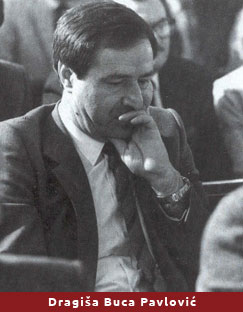 In his Expert Report, Prosecution
Expert Witness on propaganda Renaud
de la Brosse qualified the
publishing of the Memorandum as a
“deliberate leak” and suggested that
its appearance in a daily newspaper
in several instalments could not
have occurred without the approval
of at least some members of the LC.86
Just how broad support for the
Memorandum was in Serbia became
apparent at the Eighth Session of
the Central Committee, held in
September 1987, when it divided the
Serbian leadership into Stambolić
and Milošević blocs. A majority of
delegates supported Milošević
against Stambolić and Dragiša
Pavlović, the two most vocal critics
of the Memorandum, and the standoff
that ensued exposed proponents and
opponents of a new policy course.87
The wave of political purges that
followed allowed Milošević to
quickly rid the government of anyone
who did not readily accept this new
political direction.88 In his Expert Report, Prosecution
Expert Witness on propaganda Renaud
de la Brosse qualified the
publishing of the Memorandum as a
“deliberate leak” and suggested that
its appearance in a daily newspaper
in several instalments could not
have occurred without the approval
of at least some members of the LC.86
Just how broad support for the
Memorandum was in Serbia became
apparent at the Eighth Session of
the Central Committee, held in
September 1987, when it divided the
Serbian leadership into Stambolić
and Milošević blocs. A majority of
delegates supported Milošević
against Stambolić and Dragiša
Pavlović, the two most vocal critics
of the Memorandum, and the standoff
that ensued exposed proponents and
opponents of a new policy course.87
The wave of political purges that
followed allowed Milošević to
quickly rid the government of anyone
who did not readily accept this new
political direction.88
The Influence of the SANU Memorandum
on
Post-Communist Serbian State
Ideology
The SANU Memorandum reflected
criticism that had been expressed by
Serbian elites since the adoption of
the 1974 SFRY Constitution, which
was seen by some as disadvantageous
to Serbia because it partitioned the
republic into three
political-administrative parts by
making the provinces of Kosovo and
Vojvodina federal units. To
contextualise the aims of the 1974
Constitution, Audrey Budding
explained that in the 1950s and
1960s, Serbia had dominated the
Kosovo political scene. At the time,
Aleksandar Ranković, a Serbian
communist functionary who held
significant influence, made
centralisation of the Federation and
of Serbia a dominant political goal.
Ranković had risen to the highest
political ranks by serving as the
first Head of the Communist State
Security Service (UDBA). Even when
he moved on to more visible
political functions – making an
impressive political career in
post-WWII Yugoslavia by becoming
Vice-President of the Federation –
he continued to control the Secret
Service. Ranković was eventually
dismissed from the Party in 1966
for, among other things, disloyalty
to Tito and espousing Serbian
unitarism. He was accused of abusing
the power he had over the security
services, including by allegedly
putting Tito himself under
surveillance, as well as for
unlawful use of the police in
Kosovo. Some of his contemporaries
later claimed that Ranković had been
loyal to Tito but had gotten himself
into trouble trying to secure his
position as Tito's heir.
Nonetheless, Ranković was labelled a
Stalinist, a centralist, and a Serb
nationalist, and the post-Ranković
period brought democratisation and
decentralisation of the Party and
the state, with changes in the
balance of power in Kosovo in favour
of its Kosovo Albanian majority.89
Addressing the criticism by Serbian
intellectual elites of the
Constitution of 1974, Budding
explained that the first changes to
the status of Kosovo and Vojvodina
came with three sets of
constitutional amendments passed
between 1968 and 1971, in which
Serbia’s autonomous provinces were
given greater independence from
Serbia and greater decision-making
power at the federal level. The most
radical of these changes were passed
in 1971, when a twenty-three member
collective federal presidency was
introduced, with three
representatives from each republic
and two from each province, and Tito
as the 23rd member. The 1974
Constitution reduced that number to
nine: one representative from each
republic and province, and Tito as
the ninth member.90 The composition of
the Presidency changed once again in
1980, after Tito’s death, to an
eight-member body, since no one
replaced Tito as the singular head
of state.
Serbian communist liberals led by
Marko Nikezić and Latinka Perović,
who were in power until 1972,
welcomed decentralisation. Still,
many Serbian intellectuals and
sitting communist politicians
resisted the changes. According to
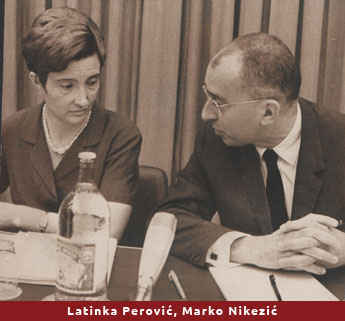 Budding, there were two groups of
opponents to decentralisation:
Yugoslav unitarists were ardent
Yugoslavists who saw
decentralisation as weakening the
original Yugoslav concept; and the
‘particularists’ had been early
proponents of Yugoslavism but sought
unity in Serbdom when they felt a
common state was being undermined.
This latter group remained
preoccupied with the unity of the
Serbs, rejecting the idea that they
should be divided among different
federal units, and began raising
concerns about the rights of Serbs
outside Serbia.91 One of the most
articulate critics of
decentralisation was Dobrica Ćosić,
who was still a member of the Party
and of the communist establishment
at the time. When Ćosić became
marginalised for his criticism of
decentralisation, he moved his
activities to the Serbian Literary
Cooperative, the so-called Zadruga,
of which he was elected president.92 Budding, there were two groups of
opponents to decentralisation:
Yugoslav unitarists were ardent
Yugoslavists who saw
decentralisation as weakening the
original Yugoslav concept; and the
‘particularists’ had been early
proponents of Yugoslavism but sought
unity in Serbdom when they felt a
common state was being undermined.
This latter group remained
preoccupied with the unity of the
Serbs, rejecting the idea that they
should be divided among different
federal units, and began raising
concerns about the rights of Serbs
outside Serbia.91 One of the most
articulate critics of
decentralisation was Dobrica Ćosić,
who was still a member of the Party
and of the communist establishment
at the time. When Ćosić became
marginalised for his criticism of
decentralisation, he moved his
activities to the Serbian Literary
Cooperative, the so-called Zadruga,
of which he was elected president.92
The most serious and explicitly
political condemnation of the
decentralisation amendments came
from the Law Faculty of the
University of Belgrade. At a Faculty
session in March 1971, Serbia’s most
authoritative legal experts
articulated their criticism in a
public discussion, concluding that
after the adoption of the
amendments, Yugoslavia would no
longer exist as a state. Some
participants called on Serbs, in
Serbia and beyond, to look to their
own interests, alluding to a
post-Yugoslav era.93 More severe
criticism included the claim by
philosopher Mihailo Đurić that “in
the name of national equality
several independent and even
opposing national states had already
been established on Yugoslavia’s
territory.”94 Yugoslav authorities
responded with repression and did
not resolve the issue, which Budding
called a missed opportunity.95
In 1977, the Serbian Presidency
commissioned an analysis of the
Constitution and its impact on
Serbia, presented in March of that
year and dubbed the Blue Book (Plava
knjiga) because of its blue cover
page.96 The Blue Book was never
officially discussed by the Party or
made public due to its explicit
criticism of the implementation of
the 1974 Federal Constitution.97 It
stated that Serbia had been divided
into three separate political,
legal, and economic entities since
each province, like all the
republics, had its own constitution,
presidency, government, and supreme
court. The analysis emphasised the
procedural difficulties of passing
or implementing laws that applied to
the whole republic, and drew
attention to the political asymmetry
that resulted from the fact that
republic-level organs were
theoretically empowered to enact
measures for the entire republic but
were in practice limited to
sovereignty over Serbia proper, i.e.
excluding Kosovo and Vojvodina.
Further, representatives of the two
provinces took part in
decision-making processes and bodies
of the republic, while there were no
representatives of the republic in
the decision-making organs of the
provinces.98
The authors of the Blue Book avoided
nationalist language and, according
to Budding, offered their most
extreme statements in its
conclusion, where a lack of
cooperation between Serbia’s
republican and provincial bodies was
said to be adversely affecting the
unity of Serbian national culture
and identity, and the question was
raised as to whether Serbs were
being allowed to exercise their
historical right to a national state
in the Yugoslav framework, as
stipulated by the 1974 Constitution.99
Although the Blue Book was never
explicitly adopted by activists in
the 1980s, Budding noted that
similar rhetoric cropped up again in
that decade, creating common ground
for cooperation between Serbia’s
politicians and opposition
intellectuals.100 And indeed, contrary
to the culture of a one-party
system, various petitions in the
1980s demanded protection of the
rights of Serbs in Kosovo.101
One such petition, made public in
January 1986 and signed by 212
Belgrade intellectuals, promoted the
idea that Serbs were being
victimised.102 Among other things, the
petition said that Kosovo Albanians
had been driving Serbs out of Kosovo
for three centuries. Although the
ethnic composition in Kosovo did
change over those centuries, the
number of migrations tied to the
20th century was exaggerated in the
petition text, as were their causes;
but the claims presented in the
petition portended the economic and
political arguments that would be
expressed in the SANU Memorandum,
published later that year.
The petition’s core assertion about
the risk to Serbs in Kosovo was
rooted in the fact that the
percentage of Serbs and Montenegrins
in Kosovo had fallen from 27% in the
four censuses after the Second World
War to just under 15% in 1981.103 Serb
nationalist activists saw this
emigration pattern to be the result
of a federal policy that favoured
Kosovo Albanians and discriminated
against Serbs in the province; and
also frequently pointed to high
birth rates among Kosovo Albanians
as evidence of a ‘special war’ waged
against the Serbs and meant to
change the demography of Kosovo. But
this argument failed to account for
some significant demographic,
social, and cultural differences
between Kosovo Albanians and Kosovo
Serbs. For example, in rural areas
where Kosovo Albanians were already
a natural majority, women generally
did not work, leading somewhat
automatically to higher birth rates
among Kosovo Albanians than among
Serbs, who lived predominantly in
towns.104 Nevertheless, the petition
asserted that emigrations of Serbs
and Montenegrins had been the result
of intimidation and violence that
was meant to create an “ethnically
pure” Kosovo. The word “genocide”
was also deployed, coupled with the
claim that it could not be stopped
without making profound social and
political changes throughout the
country.105
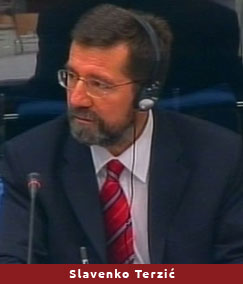 The SANU Memorandum had effectively
synthesised and aggregated several
strains of complaints, grievances,
criticisms, and arguments, and had
given them a new legitimacy in the
post-Tito era. The views expressed
in court by Defence Expert Witness
on the history of Kosovo - Slavenko
Terzić - echoed the arguments
articulated in the 1970s and 1980s
by his fellow Serbian intellectuals
and academics.106 The SANU Memorandum
authors, ostensibly offering
solutions, were responding to deep
political, economic, inter-ethnic,
and social crises that had been
unfolding in the Yugoslav Federation
since the late 1970s; yet, they
seemed interested primarily in the
status of Serbia and of Serbs in
other republics, and they concluded
that the most expedient solution was
a revocation of the autonomy of the
two Serbian provinces.107 Even Vasa
Ćubrilović, who authored “The
Resettlement of the Arnauts” in 1937
and who was himself a member of the
SANU, had criticised the
recommendations of the Memorandum,
saying that the authors had spent
years analysing the maps of Bosnia,
trying to discover how to connect
Serb lands from Belgrade via BiH to
the Croatian town of Karlovac.108 The SANU Memorandum had effectively
synthesised and aggregated several
strains of complaints, grievances,
criticisms, and arguments, and had
given them a new legitimacy in the
post-Tito era. The views expressed
in court by Defence Expert Witness
on the history of Kosovo - Slavenko
Terzić - echoed the arguments
articulated in the 1970s and 1980s
by his fellow Serbian intellectuals
and academics.106 The SANU Memorandum
authors, ostensibly offering
solutions, were responding to deep
political, economic, inter-ethnic,
and social crises that had been
unfolding in the Yugoslav Federation
since the late 1970s; yet, they
seemed interested primarily in the
status of Serbia and of Serbs in
other republics, and they concluded
that the most expedient solution was
a revocation of the autonomy of the
two Serbian provinces.107 Even Vasa
Ćubrilović, who authored “The
Resettlement of the Arnauts” in 1937
and who was himself a member of the
SANU, had criticised the
recommendations of the Memorandum,
saying that the authors had spent
years analysing the maps of Bosnia,
trying to discover how to connect
Serb lands from Belgrade via BiH to
the Croatian town of Karlovac.108
THE KARAĐORĐEVO MEETING, MARCH 1991
One event that has in particular
sparked contesting interpretations
about Milošević’s attitude toward
the break-up of Yugoslavia is the
1991 meeting in Karađorđevo at which
Milošević and Croatian President
Franjo Tuđman allegedly discussed
the partition of BiH between Serbia
and Croatia. Scholars have described
this meeting as significant for many
different, and sometimes
contradictory, reasons.
Both Milošević and Tuđman had
managed for years to avoid
responding to rumours about what may
have passed at the Karađorđevo
meeting; but at the trial, it was
addressed in detail by several
witnesses with firsthand knowledge
of the event. For Milošević, the
idea that he had even contemplated
the partition of BiH undermined his
proclaimed position as the champion
of Yugoslav unity. And so, Milošević
denied that he and Tuđman had ever
discussed the partition of BiH, at
Karađorđevo or elsewhere. This
denial was significant; for, why
disavow facts testified to by
reliable witnesses except to
distance himself from what such a
plan or agreement would have
revealed about his state of mind? As
he claimed to be fighting for the
preservation of Yugoslavia, had his
deeds in Karađorđevo – hidden at the
time from the public – reflected the
covert objectives he truly wished to
achieve?
Courtroom Reconstruction of the
Karađorđevo Meeting and
the
Agreement to Partition BiH
At the PSFRY session held on 9
January 1991, Croatia had been
called on to disarm its police
forces and punish those responsible
for the illegal importation of arms
to Croatia. Croatia took no action
by March, and at the PSFRY session
held between 12 and 15 March, JNA
Chief of Staff and Federal Minister
of Defence General Veljko Kadijević
proposed the introduction of
extraordinary measures in response
to Croatia’s noncompliance. These
measures – legally required in order
to activate the armed forces in
times of peace – were intended on
this occasion to allow use of the
JNA against the legitimately elected
Croatian government. Of eight PSFRY
votes, five were needed to enact
extraordinary measures, and only
seven members were present; and so
when BiH representative Bogić
Bogićević, an ethnic Serb, voted
against the proposal – surprising
his fellow Serbs – the measures were
not passed.109
This failure by the Serbian and JNA
leadership to impose their will led
to a dramatic walkout by Jović, the
Serbian representative and President
of the PSFRY at the time. In a
televised address that followed,
Milošević declared that Yugoslavia
was finished and that Serbia would
no longer be bound by decisions of
the federal Presidency.110 Milošević
quickly reversed his position, and
most importantly, brought Jović back
into the PSFRY; for, in truth, he
could not afford to give up the
power afforded by the Presidency and
the access it provided to the JNA.111
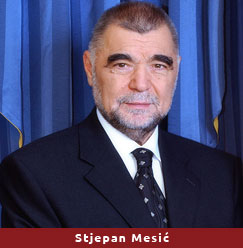 After these events in March,
relations between Serbia and Croatia
worsened by the day as armed
rebellions by Croatian Serbs spread
from the Knin region to Western and
Eastern Slavonia. At a meeting with
Jović, Croatian PSFRY representative
Stjepan Mesić complained about what
he saw as concerted efforts by local
Serbs and the JNA to destabilise
Croatia, warning that if a
full-fledged war were to break out,
the Serb minority would not be able
to stand up to the Croatian
majority. According to Mesić, Jović
told him that Serbia was not
interested in Croatia, but in BiH,
and particularly in the 66% of BiH
territory that they felt was, and
should remain, Serb. Mesić proposed
a meeting to identify and resolve
these issues through political
means, in particular concerning BiH,
and a meeting between Presidents
Milošević and Tuđman was set.112 After these events in March,
relations between Serbia and Croatia
worsened by the day as armed
rebellions by Croatian Serbs spread
from the Knin region to Western and
Eastern Slavonia. At a meeting with
Jović, Croatian PSFRY representative
Stjepan Mesić complained about what
he saw as concerted efforts by local
Serbs and the JNA to destabilise
Croatia, warning that if a
full-fledged war were to break out,
the Serb minority would not be able
to stand up to the Croatian
majority. According to Mesić, Jović
told him that Serbia was not
interested in Croatia, but in BiH,
and particularly in the 66% of BiH
territory that they felt was, and
should remain, Serb. Mesić proposed
a meeting to identify and resolve
these issues through political
means, in particular concerning BiH,
and a meeting between Presidents
Milošević and Tuđman was set.112
Tuđman informed his closest
associates at the time, including
Mesić, that he had arranged a
tête-à-tête with Milošević at
Karađorđevo. He invited no one to
join him, nor did he later disclose
the content or outcome of the
meeting.113 Tuđman’s view on BiH had
changed so completely after the
meeting in Karađorđevo that Stjepan
Mesić described it in his testimony
as an “about turn.”114 Before the
meeting, Mesić testified, Tuđman had
been in favour of maintaining the
territorial integrity of BiH; but
afterward, he advocated for dividing
BiH between Serbia and Croatia in
order to restore Croatia to its
historical glory by re-establishing
the borders of the Banovina of
Croatia that had existed from 1939
to 1941. Indeed, Milošević had
allegedly promised Tuđman the Muslim
majority towns of Cazin, Kladuša,
and Bihać in the Bosnian Krajina –
once, the so-called Turkish Croatia.115
Prosecution witness Stjepan Kljuić,
the leader of the HDZ in BiH – a
party affiliated in the 1990s with
Tuđman’s Croatian HDZ – gave a
similar account of assurances
between Milošević and Tuđman over
future territories. Kljuić was known
for his support of the territorial
integrity of BiH and his vocal
opposition to its division. He also
testified that Tuđman told him on
one occasion about Milošević’s
pledge to give him the part of
northwestern BiH that was once
Turkish Croatia. Kljuić recalled
telling Tuđman that such a statement
was akin to Milošević offering
Sardinia or Sicily as a gift,
“because it doesn’t belong to you
and it doesn’t belong to Mr.
Milošević.”116
Prosecution witness Hrvoje Šarinić –
who was Tuđman's Chef de Cabinet
before and during the wars in
Croatia and BiH and who met as a
special envoy with Milošević many
times during the Bosnian war –
testified that the date of the
Karađorđevo meeting was 26 March
1991.117 He said the meeting did not
lead to any firm agreements between
the two Presidents, but to the
establishment of two working groups
that were tasked with expanding on
the principles agreed upon at the
meeting. On the Croatian side, the
working group included President
Tuđman’s political and legal
advisors Josip Šentija, Dušan
Bilandžić, Zvonko Lerotić, and
Smiljko Sokol. The Serbian group
included President Milošević’s
advisors Vladan Kutlešić, Kosta
Mihailović, Ratko Marković, and
Smilja Avramov; all of whom except
Kutlešić appeared as Defence
witnesses in The Hague almost 15
years later.
Despite three meetings of the
working groups, nothing concrete was
achieved.118 The first of the meetings
was held on 10 April 1991 in Tikveš,
a village near the Croatian town of
Osijek; the second followed on 13
April, in Belgrade; and the third
and final meeting was held one week
later in Zagreb. Dušan Bilandžić, of
the Croatian working group, wrote on
various occasions of his account of
these meetings. During its
cross-examination of Serbian working
group member Ratko Marković, the
Prosecution presented him with a
passage from an October 1996 article
in which Bilandžić had described the
tasks laid out by Tuđman for the
Croatian working group. According to
Bilandžić, Tuđman explained that he
and Milošević had come to an
agreement on partition in principle
but that the working groups were to
develop concrete details in the form
of maps; which, after many hours of
discussions, could not be agreed
upon.119 Marković confirmed that the
meetings of the working groups were
held behind closed doors, but
rejected any suggestion of a secret
agreement for partition, reached at
Karađorđevo or elsewhere.120 He denied
that such a division was ever
discussed at working group meetings
he attended, formally or informally,
though he did allow that the maps
Bilandžić referred to might have
been discussed at the third meeting
held in Zagreb, which Marković
claimed not to have attended.121
Ratko Marković’s working group
colleague Smilja Avramov wrote in
her book that two teams had been
established to review the political,
economic, constitutional, legal, and
international law consequences of a
possible disintegration of
Yugoslavia. She asserted that the
major issues to emerge in working
group discussions were the problems
of borders and the continuity of
public law.122 At the meetings she
attended, she recalled that there
had been discussion about whether
existing republican borders could be
the basis for drawing new state
borders. According to Avramov, the
Croatians had insisted that Serbs
give up the Krajina in Croatia –
which was rejected by the Serbian
delegation.123
According to former SFRY Prime
Minister Ante Marković, Milošević
and Tuđman were indeed planning for
the dissolution of Yugoslavia. He
asserted that they discussed two key
topics at Karađorđevo – the
partitioning of BiH between Serbia
and Croatia, and how to get rid of
Marković. Milošević and Tuđman
apparently confirmed this to
Marković personally when he
confronted them both on separate
occasions.124 According to Marković,
Milošević told him that BiH was an
artificial entity created by Tito,
which could not survive, and that
most Bosnian Muslims used to be
Orthodox but had been forced to
convert. When Marković warned him
about the potential for bloodshed
should BiH be partitioned, Milošević
seemed confident that a partition
would not cause a conflict because
the majority of the BiH population
were Serbs and Croats, and moreover,
he said they planned to create an
enclave for Muslims.125
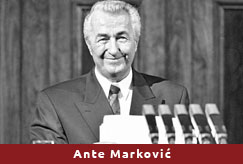 Ante Marković testified that Tuđman
had echoed Milošević’s rhetoric;
only, Tuđman claimed that the
Muslims had been Catholics who
converted to Islam. When Marković
brought up to Tuđman that a
partition could bring violence, he
also responded that he did not
believe it would lead to a war, but
because he thought Europeans would
not support a Muslim state in the
heart of Europe.126 Šarinić testified
that Tuđman believed Tito had erred
in not making BiH an autonomous
province of Croatia. A historian,
Tuđman claimed that BiH was a
historical absurdity that had
resulted from Turkish conquests in
the 15th century. And during his
first election campaign in 1990,
Tuđman had expressed an interest in
changing the borders of Croatia when
he had complained that the shape of
Croatia looked like a kifla, a
crescent-shaped roll popular in
Central and Eastern Europe.127
According to Šarinić, Tuđman
proposed broadening the thin strip
of land in the south of Croatia by
integrating it with a part of BiH
territory that was claimed by
Croatia on an ethnic basis.128 Ante Marković testified that Tuđman
had echoed Milošević’s rhetoric;
only, Tuđman claimed that the
Muslims had been Catholics who
converted to Islam. When Marković
brought up to Tuđman that a
partition could bring violence, he
also responded that he did not
believe it would lead to a war, but
because he thought Europeans would
not support a Muslim state in the
heart of Europe.126 Šarinić testified
that Tuđman believed Tito had erred
in not making BiH an autonomous
province of Croatia. A historian,
Tuđman claimed that BiH was a
historical absurdity that had
resulted from Turkish conquests in
the 15th century. And during his
first election campaign in 1990,
Tuđman had expressed an interest in
changing the borders of Croatia when
he had complained that the shape of
Croatia looked like a kifla, a
crescent-shaped roll popular in
Central and Eastern Europe.127
According to Šarinić, Tuđman
proposed broadening the thin strip
of land in the south of Croatia by
integrating it with a part of BiH
territory that was claimed by
Croatia on an ethnic basis.128
Particularly valuable testimony
about the plans discussed at
Karađorđevo came from Milan Babić,
who testified that Milošević had
showed him a map on which the
division of BiH, as agreed between
he and Tuđman, was marked.129 But
Milošević worked hard in court to
downplay the Karađorđevo meeting and
any evidence of plans to carve up
BiH. While he was unable to refute
or seriously challenge the evidence
given by Prosecution witnesses, he
raised the issue when Defence
witness Vojislav Šešelj was on the
stand. According to Šešelj, details
about the Karađorđevo meeting had
been invented in order to upset
Alija Izetbegović and other Bosnian
Muslim politicians, to turn them
against and Serbia and Croatia. Yet,
when asked by the Chamber to
elaborate on who had invented the
story, and exactly why, Šešelj
responded vaguely. First, he alluded
to the Borba newspaper, a
pro-communist newspaper that, he
alleged, sided with the federal
government of Ante Marković and
Western powers. When the Chamber
then asked him to explain why
Marković might spread false rumours,
Šešelj – rather unconvincingly –
postulated that Marković could have
feared that a possible agreement
between Milošević and Tuđman would
keep Yugoslavia together but would
eliminate him as its leader.130 Yet,
Marković himself had testified that
successful reforms of the federal
government might have halted the
disintegration of the SFRY and kept
all the republics together in one
state, something that he felt
Slovenia, Croatia, and Serbia no
longer wanted.
In his cross-examination of Ante
Marković, Milošević confirmed that
he and Tuđman had indeed met in
Karađorđevo. He said they shared an
appreciation that the chief issue
for the future of the SFRY was the
relationship between Serbs and
Croats or, rather, between Serbia
and Croatia; but he denied any
discussion of partitioning BiH or
removing Marković, suggesting that
Marković had accorded himself too
much importance and asking why they
would consider him at all.131 Marković
replied that Serbia, Croatia, and
Slovenia had all embraced the idea
of independence by 1991, and that
they had schemed about his dismissal
because they perceived the reforms
he advocated – which were aimed at
preserving Yugoslavia – as a threat.
As Marković saw it, a common state
was no longer an option for
Milošević or Tuđman and Marković
stood in the way of their plans to
establish their respective states
within ethnically-defined borders,
each including territories claimed
in BiH.132 By August 1990, the official
view of leading Serb politicians was
that Marković could not be trusted,
and they accused him of being an
extended hand of the US.133
Milošević also challenged Hrvoje
Šarinić regarding his testimony on
Karađorđevo, acknowledging that
Bosnia was discussed but claiming
that the topic of conversation had
been the influence of Islamic
fundamentalism in BiH. Šarinić
corrected Milošević, saying that
this particular issue had not been
discussed at Karađorđevo but at the
follow-up meeting in Tikveš, which
Šarinić attended.134 He went on to
testify that, at that meeting,
Milošević had given Tuđman a
handwritten note detailing a
supposed Muslim axis, which he
referred to as the ‘Green
Transversal.’ Milošević had asserted
that this axis presented a major
threat, alleging that it ran through
Turkey, Bulgaria, Western Macedonia,
Sandžak, and Kosovo, and claiming
that Muslims sought a unitary state
including BiH where Serbs and Croats
would be a minority. According to
Šarinić, after that second meeting
in Tikveš, Tuđman grew less
optimistic about cooperating with
Milošević.135
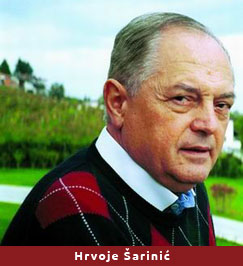 Šarinić also testified that Tuđman
had brought attention in Tikveš to
the Log Revolution, staged by
Croatian Serbs in August 1990, and
had protested the fact that it had
cut off a large part of Croatian
territory from the control of its
central authority in Zagreb.
Milošević denied that he was behind
the Log Revolution and Tuđman
challenged him, calling Krajina the
Trojan horse of Serbian politics in
Croatia and implying that Milošević
stood behind the RSK leadership.
Milošević continued to deny his
involvement, but eventually granted
that the Croatian problem could be
resolved; leaving Šarinić wondering
how Milošević could propose such a
resolution if he really had nothing
to do with the Log Revolution in the
first place.136 But what Šarinić
learned eventually was that, for
Serbia, the Serb national question
in BiH was of far greater importance
than the Serb national question in
Croatia. In 1995, Milošević himself
told Šarinić that the creation of
the RS had resolved 90% of the Serb
national question just as President
Tuđman had resolved the Croat
national question with the
establishment of Herceg-Bosna,137 a
territory in BiH claimed by Croatia
as of November 1991. Šarinić also testified that Tuđman
had brought attention in Tikveš to
the Log Revolution, staged by
Croatian Serbs in August 1990, and
had protested the fact that it had
cut off a large part of Croatian
territory from the control of its
central authority in Zagreb.
Milošević denied that he was behind
the Log Revolution and Tuđman
challenged him, calling Krajina the
Trojan horse of Serbian politics in
Croatia and implying that Milošević
stood behind the RSK leadership.
Milošević continued to deny his
involvement, but eventually granted
that the Croatian problem could be
resolved; leaving Šarinić wondering
how Milošević could propose such a
resolution if he really had nothing
to do with the Log Revolution in the
first place.136 But what Šarinić
learned eventually was that, for
Serbia, the Serb national question
in BiH was of far greater importance
than the Serb national question in
Croatia. In 1995, Milošević himself
told Šarinić that the creation of
the RS had resolved 90% of the Serb
national question just as President
Tuđman had resolved the Croat
national question with the
establishment of Herceg-Bosna,137 a
territory in BiH claimed by Croatia
as of November 1991.
Although there has been no official
and final resolution on the question
of whether a partition of BiH was
agreed to at Karađorđevo by
Milošević and Tuđman, the spirit of
such a plan was manifested in
efforts by both Serbia and Croatia
to encourage population transfers
within BiH; and these efforts were
at least somewhat coordinated. On 8
January 1992, Nikola Koljević, a
politician in the Serb Democratic
Party of Bosnia (Srpska Demokratska
Stranka, or SDS), had informed
President Tuđman that a
reorganisation of Bosnia was
necessary, stressing the need for
homogenisation of certain areas and
a transfer of property and
populations.138 Perhaps the Croatians
and Serbians thought a civilised and
mutually agreed transfer was
possible and preferable, but it was
something the Bosnian Muslims could
not accept and never did. Muslims in
BiH understood that ‘homogenisation’
would amount to ethnically uniform
Serb and Croat territories, at the
expense of the Muslim population.
Later that year, a transfer of
populations in BiH was again
discussed, in September, between
Tuđman and then FRY President
Dobrica Ćosić in Geneva.139
Despite attempts by both Serbia and
Croatia to partition BiH, Hrvoje
Šarinić insisted that the Croatian
approach to BiH was less
straightforward than that of Serbia
given that Bosnian Croats, unlike
Bosnian Serbs, had supported the
February 1992 referendum on the
independence of BiH.140 And indeed, in
support of this position, Croatia
was among the first countries to
recognise BiH after its declaration
of independence in April 1992.141
Serbia, conversely, withheld its
recognition of BiH until after the
RS was established and
internationally approved in 1995.
|